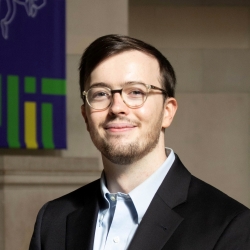Correlation of the L-mode density limit with edge collisionality (Invited)
Talk, 66th Annual Meeting of the APS Division of Plasma Physics, Atlanta, Georgia
A novel, multi-machine database study (Alcator C-Mod, AUG, DIII-D, and TCV) identifies a two-variable, dimensionless stability boundary for the disruptive, L-mode density limit (LDL). This power law, with effective collisionality in the edge (ν*,edge) as the leading term, predicts the LDL with significantly higher accuracy than the widely-utilized Greenwald limit. With density being such a critical lever for tokamak performance, there has historically been a wide interest in understanding the operational boundary imposed by disruptive LDL events. This boundary is commonly estimated with the Greenwald limit, although it is widely accepted that the disruptive boundary is set by the plasma edge, not necessarily bulk plasma quantities. Additionally, input power dependencies have been reported, but vary significantly between studies. In this study, we create a multi-machine database of over 150 LDL events assembled from both carbon- (DIII-D, TCV) and metal-wall devices (Alcator C-Mod, AUG), with 3000+ additional non-LDL discharges for comparison. We find statistical/machine learning models utilizing edge density and temperature from Thomson Scattering achieve significantly higher LDL prediction performance than the Greenwald fraction. This is true for Greenwald-like scalings with line-averaged density, edge density, and with an input power scaling. Additionally, we identify a two-variable, dimensionless, stability boundary that retains the accuracy of the far more sophisticated neural network model. This analytic stability boundary is dominated by the contribution of the effective collisionality in the plasma edge. Our study demonstrates that LDLs occur at high edge collisionality, which bodes well for burning plasmas with naturally low edge collisionality due to self-heating. In the near-term, this collisionality boundary could also be readily measured for active density limit avoidance.
